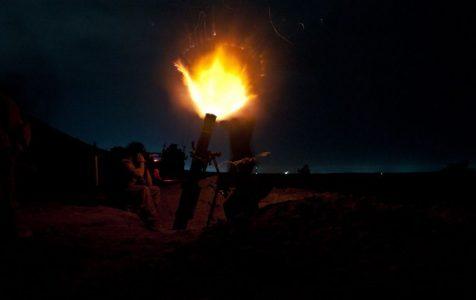
ISIS terrorist group is on the rise again in Iraq and Syria
In recent weeks coalition forces have more than tripled the number of strikes they made against ISIS elements in Iraq and Syria. But more ground operations in pockets of those countries are needed to flush out the remaining fighters, officials said.
Since the May 1 start of “Operation Roundup,” Syrian Democratic Forces resumed offensive combat operations in the Middle Euphrates River Valley, according to the Pentagon.
In May the coalition conducted 225 strikes with 280 engagements. That was triple the number of strikes that took place in March, which was 74. And higher than the 183 strikes in April.
Defense Secretary James Mattis told reporters this week that “it’s still a fight.” Partner forces kicked off an attack in one of the “last enclaves” of ISIS.
That fighting continues even after the Iraqi city of Mosul was retaken last July and Raqqa, Syria was retaken late last year.
Though airstrikes have increased, one expert says that might not be the best measure for sweeping out the terrorist organization from the region.
“The strikes alone won’t eliminate residual ISIS presence,” said Jennifer Cafarella, director of intelligence planning for the Institute for the Study of War.
She said the ground advance is key, in part because ISIS fighters have been using tunnels and other subterranean structures to blunt the effectiveness of airstrikes.
A June 1 engagement that involved four strikes in Syria near Abu Kamal destroyed an ISIS-held building and tunnel. Shortly afterward a June 9 strike by coalition forces near Mosul, Iraq destroyed five such tunnels, according to the release.
Leaders are talking more about the ground offensive, as Mattis mentioned to media.
“At some point, we will continue to move against the other enclaves down in, what we call the MERV or the Middle Euphrates River Valley,” Mattis said.
Another factor complicating the situation, specifically in Syria, has been that the factions supporting Syrian President Bashar al-Assad’s regime are present along the Iraq-Syria border, Cafarella said.
Officials included commentary on battlefield actions by some ISIS fighters and leaders.
“Daesh (ISIS) morale is sinking on the frontlines as privileged Daesh leaders increasingly abandon their own fighters on the battlefield, taking resources with them as they flee,” according to the release.
But there might be more to understand with some of those actions and it may be harder to measure the strength of the remaining terrorist forces in the area.
“ISIS chose to cede terrain to opposing forces in strongholds like Hawija, (Iraq) in order to preserve capabilities while buying time and space to regroup,” Cafarella said. “The scale of those residual capabilities is difficult to tell, but they’re there.”
Reports indicate that ISIS forces have survived numerous attempted clearings in areas near Kirkuk, Iraq, she said. Similar intelligence shows warning signs similar to the rise of the organization beginning in 2011 of local population extortion and fake security checkpoints.
Source: MT





